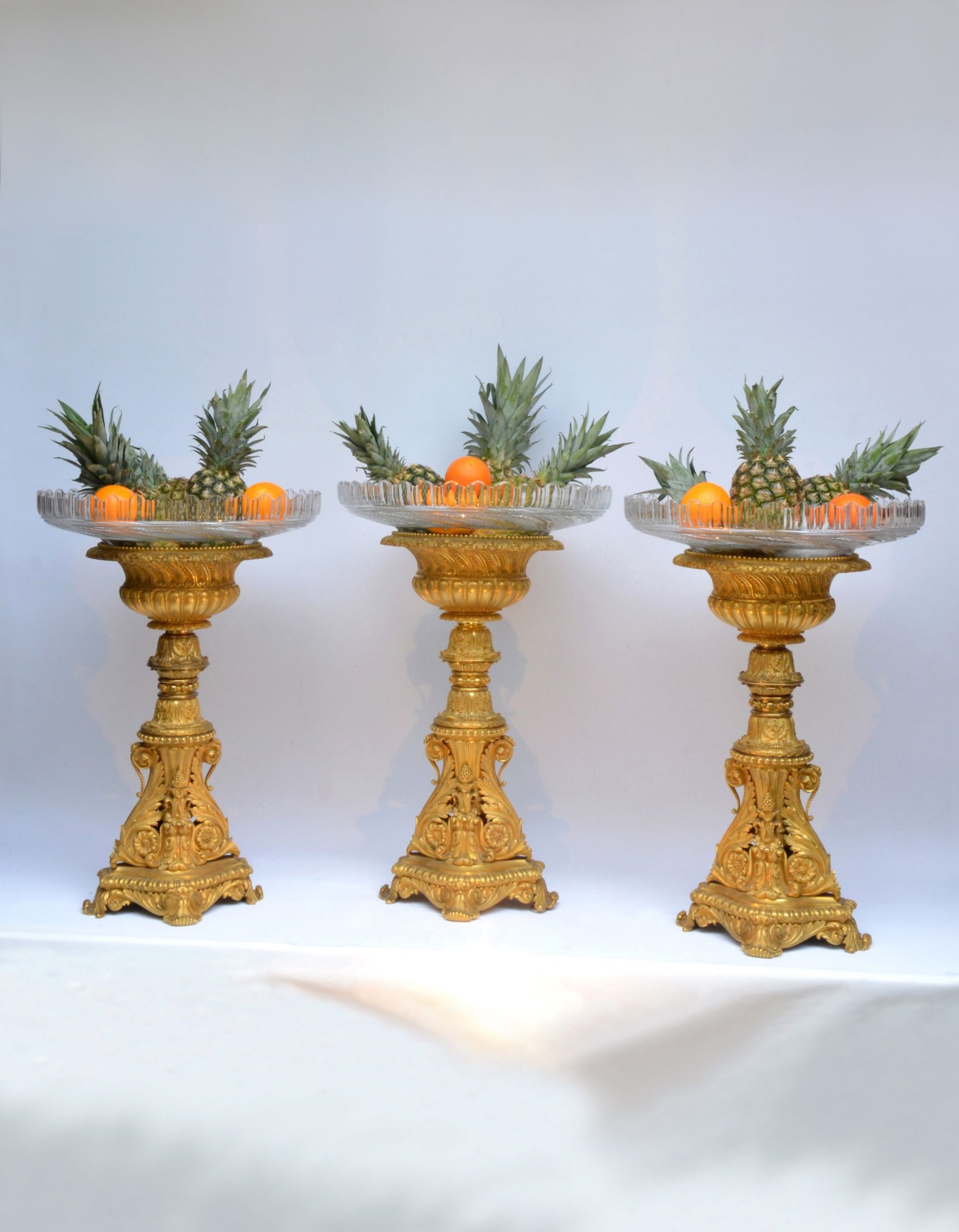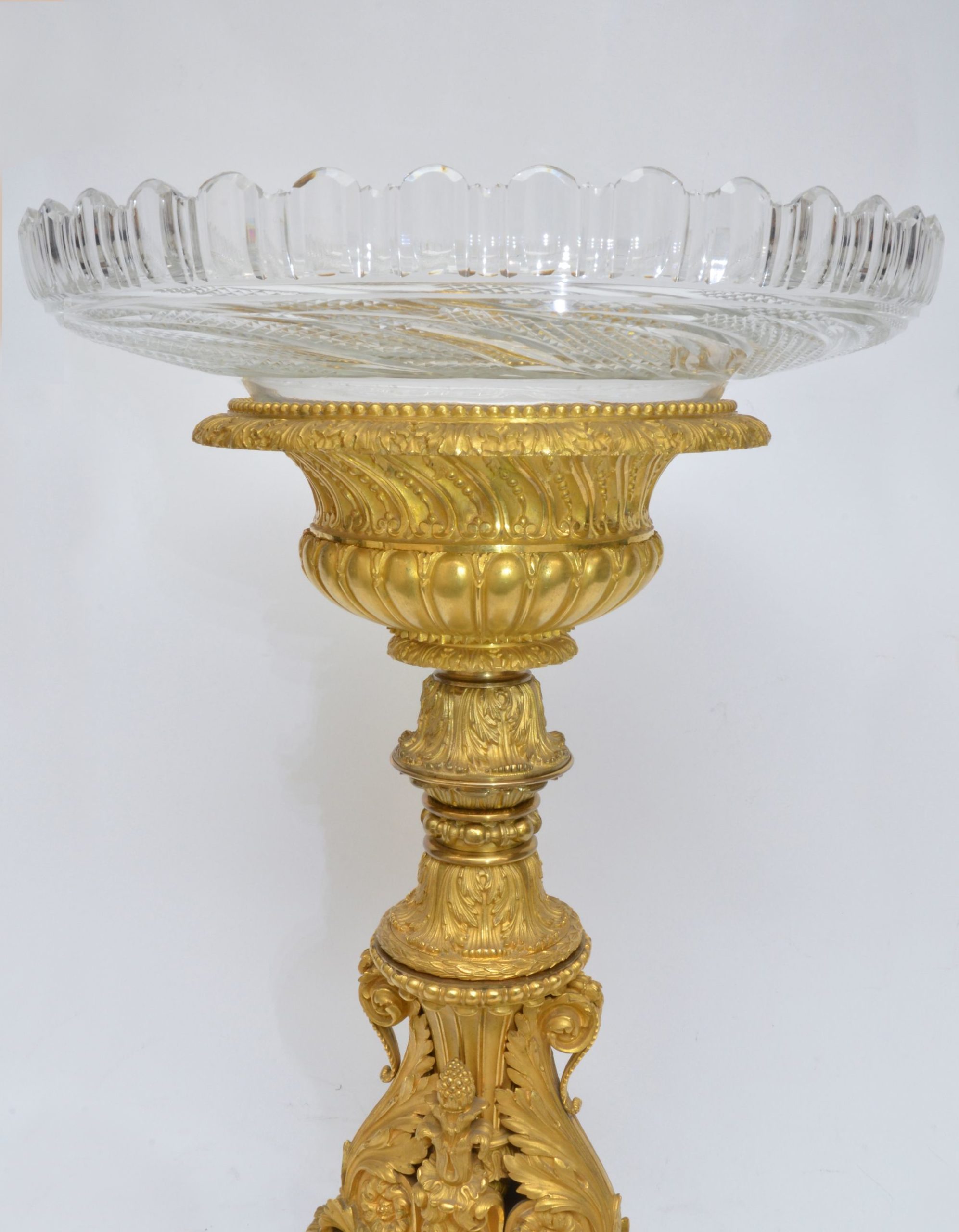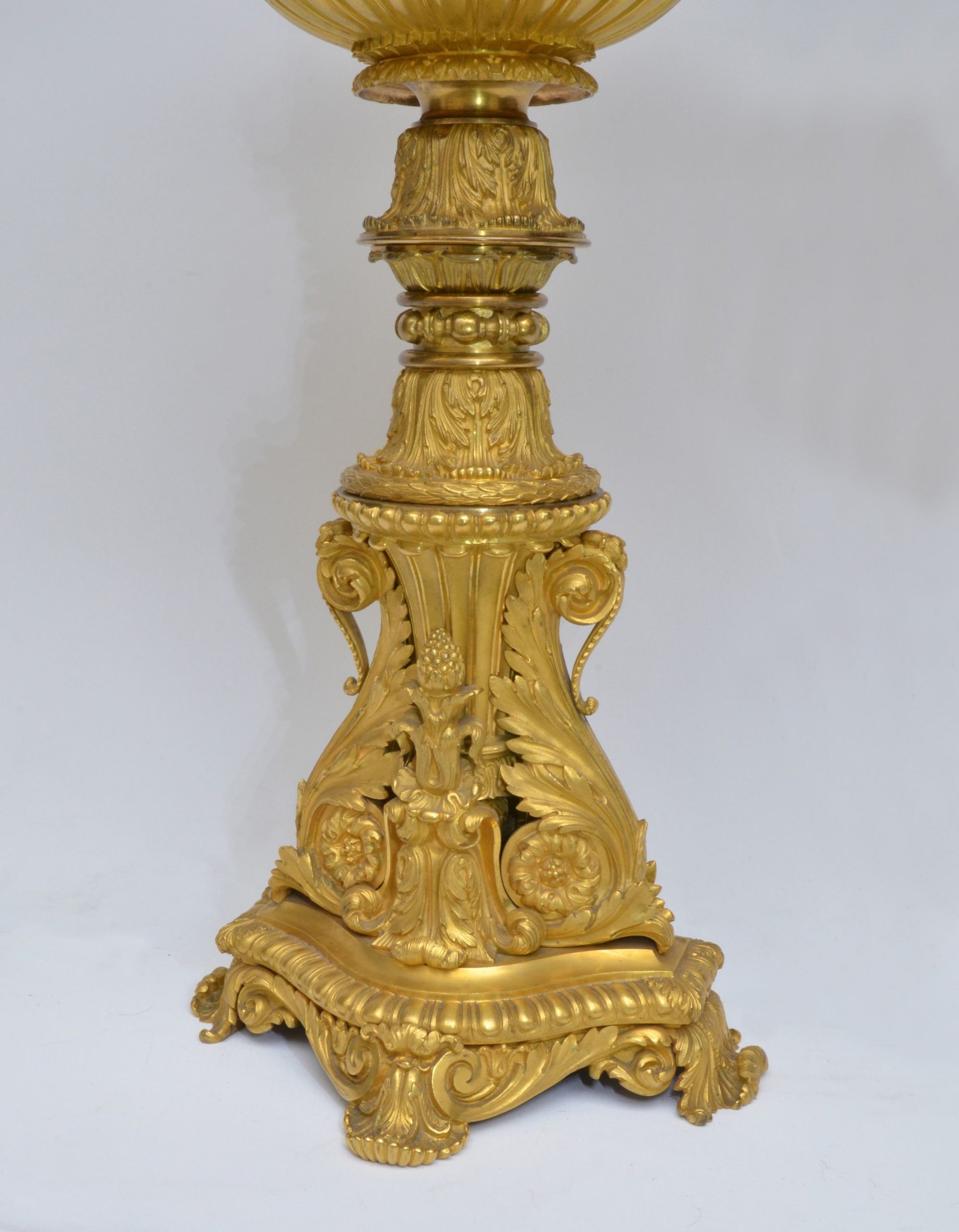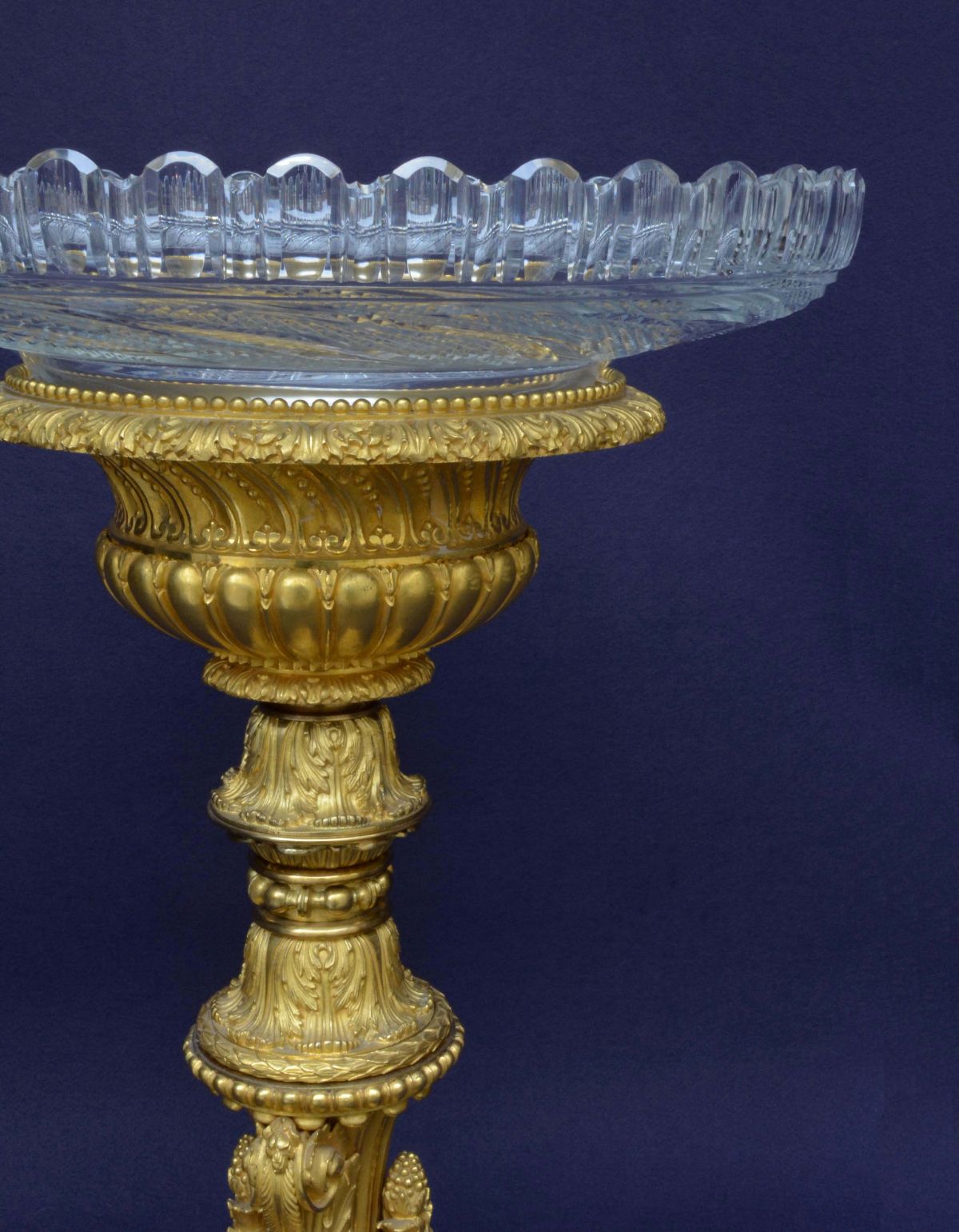Suite of three Restauration gilded-bronze Centrepieces after Thomire
test
Suite of three Restauration gilded-bronze Centrepieces after Thomire
5300
Suite of three Restauration gilded-bronze Centrepieces after Thomire:
in the manner and quality of Thomire of Paris; designed for grand dining tables, see Attingham Park et al. The stands of acanthus cast foliate design on rhomboid base; bearing large cut glass dishes with petal edge and cut with spiral design and centre star.
Circa 1830 and restored. Thomire worked in Paris between 1800-30 and was appointed premier bronzeur to the Emperor.
| Height: | 26" | - | 66.0cm |
| Width: | 18" | - | 46.0cm |
Glossary Words
Restoration, Restauration
Following Napoleon's abdication and the restoration of the Bourbon monarchy in 1830, French designs retained the Empire style but became heavier and more rounded, featuring lyres, swans and acanthus motifs in their rich floral decoration.
gilded, gilt
A very thin layer of gold applied to brass or bronze.
Thomire, Pierre-Philippe
Pierre-Philippe Thomire (1751–1843) a French sculptor, was the most prominent bronzier of the First French Empire in the late 1700's. Before setting up his own establishment in 1775, Thomire trained in the workshop of Pierre Gouthière. He began assisting Jean-Claude-Thomas Duplessis, the artistic director of the Sèvres Porcelain Manufactory, in making mounts. When Duplessis died in 1783, Thomire took over his job, supplying all the gilt bronze mounts for the porcelain. This work kept him in business throughout the French Revolution, when many other producers went bankrupt. In 1804 he bought the business of a marchand-mercier, thus allowing him to sell furniture, Sèvres porcelain, and decorative objects, which he produced in his own workshops. In 1809 the Emperor Napoleon made him ciseleur de l'empereur (Engraver to the Emperor); Two years later, because of the large number of pieces Thomire supplied to the palaces, his firm became fournisseur de leurs majestés (Furniture Suppliers to their Majesties). Thomire's business survived even after Napoleon's downfall (1814-15). He continued to win numerous medals at various exhibitions and retired himself in 1823.
cut glass
Often now referred to as 'crystal', the glass was blown and shaped, then passed to a specialist cutter, who would polish and cut patterns to enhance its brilliance.












